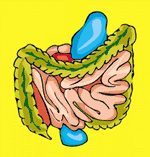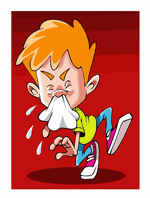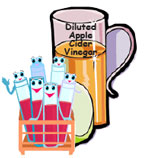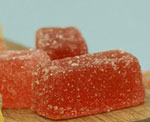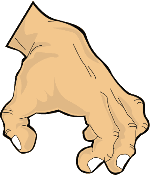Vinegar as a Disinfectant
"Using vinegar as a disinfectant
is the original GREEN way to clean"
Historical uses
During the middle ages people used vinegar as a disinfectant to help combat many diseases including the dreaded bubonic plague.
Throughout the American civil war and right up to the first world war, soldiers used apple cider vinegar as a disinfectant to clean and disinfect wounds.
Current uses of vinegar as a disinfectant

Research reported in 1996 on sanitizing food and food preparation surfaces, showed that the efficiency of vinegar as a disinfectant could be increased by 10 times when the surface or food was sprayed with normal vinegar (5% acetic acid) and hydrogen peroxide (3%) over either one of the sprays alone.
The researchers found that this spray combination killed virtually all Salmonella, Shigella, and E. Coli bacteria present on heavily contaminated food and food preparation surfaces.
Then in February 2006 researchers from MicroChem Lab Inc. in Euless, Texas, raised the bar even higher by reporting at the American Society for Microbiology, that a solution of vinegar and regular household bleach could be used, not just as a powerful disinfectant, but as a very effective sterilizing agent against bacterial spores dried onto test surfaces.

According to the researchers, " Bacterial spores dried onto surfaces are considered the most resistant to disinfectants of all microbes, and a disinfectant that can kill such spores would be expected to also kill all types of vegetative bacteria, fungi, mycrobacteria (TB), and viruses."
They found that the vinegar bleach solution sterilized all of the surfaces tested within 20 minutes, while a diluted bleach solution alone was only effective in killing all of the spores on 2.5 percent of the surfaces after 20 minutes.
To make a sterilizing solution for household use, Dr. Norman Miner (one of the study researchers) recommends first diluting 1 oz (30 ml) of household bleach in one gallon (3.8 L) of tap water and then adding 1 oz (30 ml) of 5% distilled white vinegar.
So if you really want to sterilize that old wooden cutting board in your kitchen, don't use vinegar as a disinfectant only, wipe it down with the above vinegar/bleach solution, wait 10 to 20 minutes, and voila it's done.
However use caution when preparing any sterilizing solution, as Dr. Miner explains: "I would remind everyone that antimicrobials of any type are toxic biocides and should be used with many safety precautions such as rinses, ventilation, protective clothing, etc."
 Warning: Do not add more vinegar than recommended to bring the pH of the sanitizing solution down to 6.0. Because when the solution pH is between 4 and 5 it is very corrosive to metals. And when the bleach solution is dropped below pH 4.0, deadly chlorine gas is formed.
Warning: Do not add more vinegar than recommended to bring the pH of the sanitizing solution down to 6.0. Because when the solution pH is between 4 and 5 it is very corrosive to metals. And when the bleach solution is dropped below pH 4.0, deadly chlorine gas is formed.
How does it work?
 Ordinary household bleach contains about 5.2% sodium hypochlorite (NaOCl) in water, and has a pH of about 12.
Ordinary household bleach contains about 5.2% sodium hypochlorite (NaOCl) in water, and has a pH of about 12.When using it as an environmental surface disinfectant however it is commonly diluted 10 to 25 fold with tap water which drops the pH level down to about 11.
At an alkaline pH of 8.5 or higher, most of the bleach is in the form of the chlorite ion (OCl-).
At an acidic pH of 6.8 or lower, most of the bleach is in the hypochlorite form (HOCl).
It just so happens that the hypochlorite (HOCl) is about 80 to 200 times more antimicrobial than the chlorite ion (OCl-). So by adding vinegar to the dilute bleach solution you are reducing it's pH so that most of the bleach exists as hypochlorite, the much more potent microbe killing form!
Reference:
Medical News Today - Killing Power Of Bleach Increased By Vinegar- 22 Feb 2006. ( Web Link )

